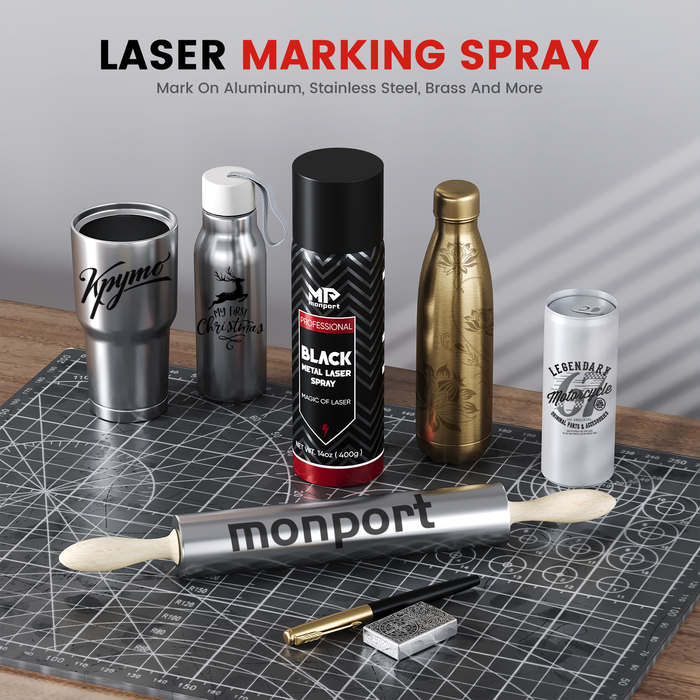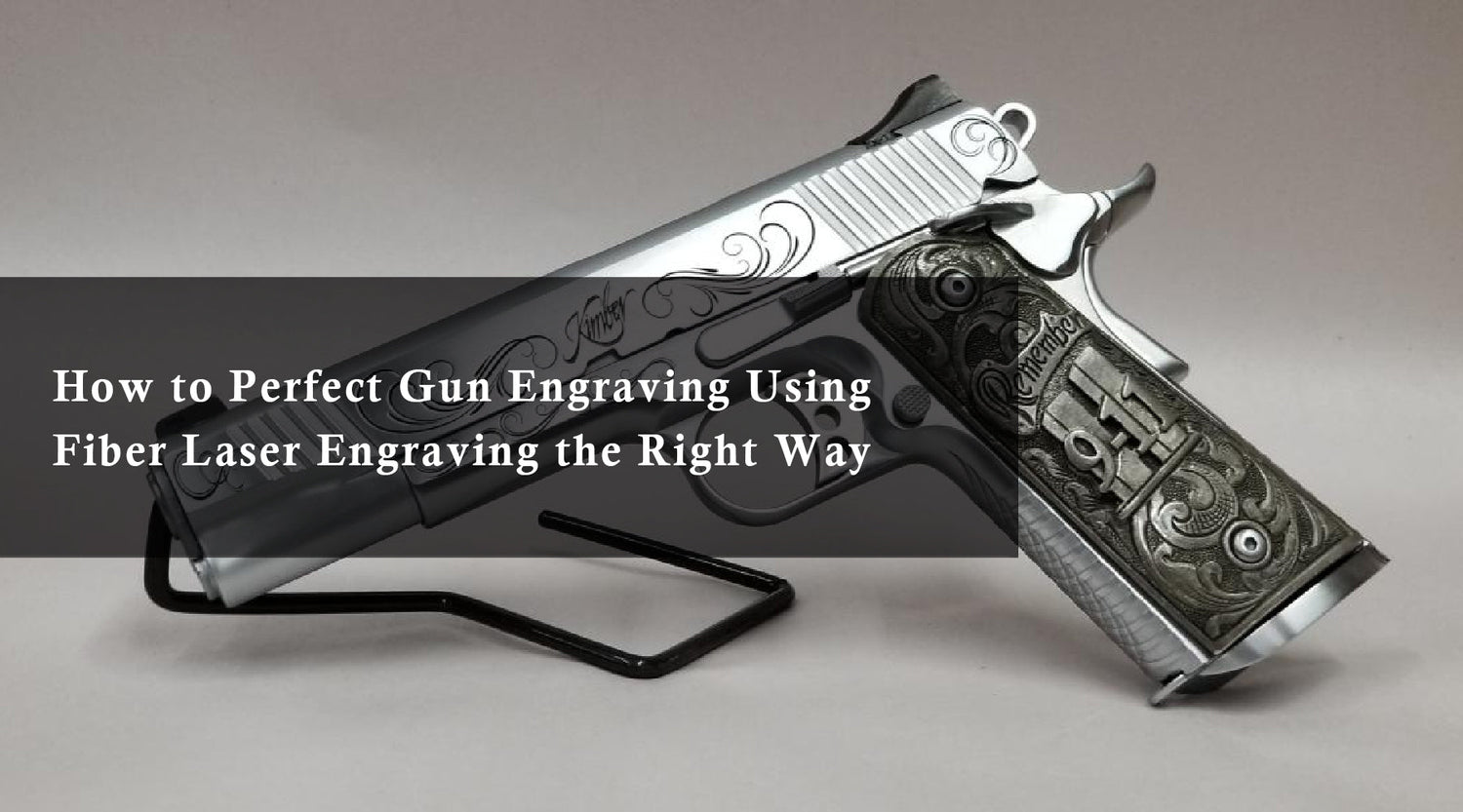Can you laser engrave bamboo? Absolutely! Bamboo laser engraving has become increasingly popular for creating intricate designs on a variety of materials.One material that has gained attention is bamboo. With its natural beauty and sustainability, bamboo products are in high demand for laser cut projects, offering both functionality and eco-friendly appeal, especially when enhanced with black laser marking spray for sharp contrasts and intricate details.Which type of laser is best suited for this task? In this blog post, we'll explore the capabilities of CO2 vs diode lasers and determine the ideal choice for bamboo laser engraving.
Monport 80W CO2 Laser Engraver & Cutter (24" x 16") with Autofocus
The Versatility of Laser Engraving
Laser engraving is a precise process that involves using a high-powered wood laser machine to remove material from a surface, creating intricate designs and patterns. While often associated with hard materials like metal and acrylic, laser engraving wood can also be applied to a wide range of softer materials, including wood and bamboo.
Can You Laser Engrave Bamboo?

Yes, you can definitely laser engrave bamboo! Bamboo's composition, which includes cellulose fibers and lignin, makes it suitable for laser engraving. The laser beam interacts with the material, creating a beautiful contrast between the engraved area and the natural bamboo color.
CO2 vs. Diode Laser: Which is Best for Bamboo Laser Engraving?
When it comes to bamboo laser engraving, the CO2 laser is generally the preferred choice. Here's why:

- Material Compatibility: CO2 lasers excel at engraving non-metallic materials like wood, bamboo, and acrylic. They interact effectively with the organic compounds in bamboo, producing clean and precise engravings.
- Power and Precision: CO2 lasers offer a wider range of power levels, allowing you to adjust the intensity of the laser beam for different bamboo thicknesses and desired engraving depth.
- Versatility: In addition to bamboo, CO2 lasers can be used for engraving a variety of other materials, making them a versatile tool for any workshop or studio.
To help you make an informed decision, here's a comparison of CO2 and diode lasers for bamboo engraving:
| Feature | CO2 Laser | Diode Laser |
|---|---|---|
| Material Compatibility | Excellent for non-metals like bamboo, wood, acrylic | Primarily for metals and certain plastics |
| Power Output | Higher power levels for deeper engravings | Lower power levels, suitable for light engraving |
| Beam Quality | Focusable beam for precise cuts | Collimated beam, less focused |
As you can see, CO2 lasers are the superior choice for bamboo engraving due to their higher power output, material compatibility, and beam quality.
While diode lasers can be used for some basic engraving tasks, they may not be as effective as CO2 lasers for achieving the desired depth and detail on laser engraving wood like bamboo.
The Monport 80W CO2 Laser Engraver: A Perfect Choice for Bamboo Engraving
The Monport 80W CO2 Laser Engraver is an excellent option for those looking to laser engrave bamboo. With its powerful laser beam and spacious work area, this machine is capable of handling large bamboo laser cut projects with ease.

Key features of the Monport 80W CO2 Laser Engraver:
- Large work area: Accommodates larger bamboo pieces and projects.
- High-performance laser beam: Delivers precise and clean engravings.
- Intelligent control panel: Offers user-friendly operation and customization options.
- Advanced safety features: Ensures a safe working environment.
Machine Guide Settings for Optimal Bamboo Engraving
To achieve the best results when laser engraving bamboo with the Monport 80W CO2 Laser Engraver, consider the following settings as a starting point:
- Power: 20-25%
- Speed: 400 mm/s
- Frequency: 1000-2000 Hz
- Pass count: 1-2 passes
Note: These settings are a general guideline and may need to be adjusted based on the thickness of the bamboo, desired engraving depth, and the specific characteristics of your laser machine.
Step-by-Step Guide to Laser Engraving Bamboo
- Prepare your bamboo: Clean the bamboo surface to remove dirt and debris.
- Design your artwork: Create your desired design using graphic design software.
- Import design: Transfer the design to your laser engraving machine's software.
- Adjust settings: Set the machine parameters based on the recommended settings and your desired engraving depth.
- Focus the laser: Use the autofocus function or manually adjust the focus to ensure optimal results.
- Start engraving: Initiate the laser engraving process.
- Inspect the engraving: Once the engraving is complete, examine the results and make adjustments as needed.
Tips:
- Test on a scrap piece of bamboo before engraving your final product.
- Use a ventilation system to remove smoke and fumes during the engraving process.
- Consider applying a protective finish to the engraved bamboo to enhance its durability.
Applications of Bamboo Laser Engraving using CO2 Laser
Laser engraving on bamboo opens up a world of creative possibilities. Here are some popular applications:

- Personalized Gifts: Create unique and memorable gifts with engraved names, dates, or special messages on bamboo products like cutting boards, coasters, or pens.

- Home Decor: Enhance your home decor with stylish bamboo wall art, lamps, or decorative plates featuring intricate laser-engraved designs.

- Kitchenware: Add a touch of elegance to your kitchen with engraved bamboo utensils and plates, serving trays, wine racks.

- Personal Oral Care Products: Laser engraving can elevate these toothbrushes to a whole new level of personalization. By adding names, initials, or custom designs.
FAQs
Final Takeaway
Laser engraving is a precise process that involves using a high-powered laser beam to remove material from a surface, creating intricate designs and patterns. While often associated with hard materials like metal and acrylic, bamboo laser engraving can also be applied to a wide range of softer materials, including wood and bamboo, making it an ideal technique for laser cut projects using a wood laser machine, especially when paired with black laser marking spray for enhanced detail and contrast.
Ready to explore the world of bamboo engraving? Contact us today to learn more about the Monport 80W CO2 Laser Engraver and how it can elevate your creative projects.
Celebrate Business Week with Monport! Enjoy up to 30% OFF on our premium laser engraving machines and unlock incredible free gifts to elevate your projects. Buy a CO₂ laser and receive a FREE Water Chiller, Rotary Axis, and LightBurn software. Purchase a Fiber Laser and get a FREE Rotary Axis. Plus, score a special $130 OFF on bundle deals and 30% OFF laser engraving materials. Don’t wait — use code BESTMP10 at checkout and click here to shop now!
Read More: The Secret Ingredient: Why CO2 Laser Frequency Matters for Bamboo Laser Engraving











